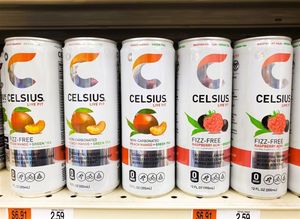The whimsical float entitled “Garden of Hopes and Dreams” will highlight City of Hope® patients who share personal stories about their journey back to health in order to help others facing cancer
In preparation for a Jan. 1 ride on the Rose Parade float, “Garden of Hopes and Dreams,” nine cancer survivors will share stories of unwavering belief, perseverance and how City of Hope, a world-renowned cancer research and treatment organization, provided compassionate, lifesaving therapies.
City of Hope’s float encapsulates this year’s Rose Parade theme, “Dream. Believe. Achieve.” Leading health care professionals will ride or walk alongside their cancer patients, whose strength, determination and positive outlook served them well during their journey to beat cancer.
The 50-foot long and nearly 17-foot-tall float built by Phoenix Decorating Company will feature animated butterflies, symbols of hope and transformation. Whimsical mushrooms will punctuate rebirth after a chaotic time, a metaphor for the sustained battle patients and their health care teams have against cancer, as well as a respectful nod to the dreamed-about eventual end of the pandemic.
COVID-19 created an additional obstacle, but these patients and health care professionals continued an uninterrupted fight against cancer. Many of the patients chose to share their cancer journey so that others diagnosed with a similar disease do not feel alone. Their commitment to their community is unequaled.
Sandy Shapiro, 61, Los Angeles: In less than three years, single mother and documentary producer Sandy Shapiro faced medical conditions that would have overwhelmed anyone else: a breast cancer diagnosis, a double mastectomy, the shock of then developing acute myeloid leukemia that required a stem cell transplant, graft-versus-host disease (a serious transplant complication in which donor immune cells can attack their new environment) and — to top it off — pneumonia caused by COVID-19. She has survived all of these and is doing well.
After her divorce in 2016, Shapiro was busy raising two daughters, so she skipped regular screening check-ups for two years. In 2018, her doctor found something suspicious in her right breast that ended up being breast cancer. Shapiro had been afraid of breast cancer her entire life; her mother and several cousins had it. So, as her treatment option, she chose a double mastectomy. Months later, she was diagnosed with acute myeloid leukemia, received chemotherapy and, eventually, a stem cell transplant with cells obtained from her sister. Then during her recovery, she contracted COVID-19, which led to pneumonia. Now, more than a year past her transplant, Shapiro remains in remission and is determined to be there for her daughters’ milestone moments. For more details, read this blog.
Courtney “Coco” Johnson, 17, Pasadena: In spring 2020, a 15-year-old Coco Johnson inadvertently brought joy and hope to so many who were quarantined indoors with an endless cycle of bad, scary news.
Johnson had undergone oncologic surgery with J. Dominic Femino, M.D., chief of City of Hope’s Division of Orthopaedic Surgery, and she had just finished her last round of chemotherapy for a rare bone cancer called Ewing’s sarcoma. To celebrate, her friends and neighbors lined the street with cars and signs to welcome her back home, while also safely social distancing. This heartwarming homecoming went viral and was featured on the first episode of the YouTube show “Some Good News With John Krasinski.” Ellen DeGeneres later interviewed Johnson on “The Ellen Show.”
Unfortunately, the parade was not the end of Johnson’s cancer journey. In December 2020, she received a secondary cancer diagnosis: acute myeloid leukemia, a rare and serious side effect of the lifesaving chemotherapy she had received. She underwent treatment and a subsequent blood stem cell transplant at Children’s Hospital Los Angeles in March 2021.
During her cancer treatment, Johnson participated in many clinical trials at City of Hope. Yet, she was determined not to fall behind in school and continued her studies during her treatment, recovery and through her summers. Today, Johnson continues to recover with a positive outlook. She is eager to share her story to raise awareness about these diseases, as well as to inspire people to donate blood. “I received a lot of blood throughout my treatment just to keep me feeling good and healthy,” she said. For more details, read this Q&A.
Krissy Kobata, 39, Los Angeles: Krissy Kobata lived so many years feeling like a “ticking time bomb.” At 25, she was diagnosed with a blood disorder called myelodysplastic syndrome, a condition sometimes called “pre-leukemia.” She needed a bone marrow transplant, but Kobata is of mixed origin — her father is Japanese and her mother is white — making it difficult to find a blood donor match. White people have a 79% chance of finding a match, and the odds start dwindling with Black people having the worse chances at 29%, according to Be the Match, which is operated by the National Marrow Donor Program. People of mixed ancestry have even lower chances.
Kobata, a director of business development, had a successful stem cell transplant at City of Hope on Dec. 12, 2017. She continues to be an advocate for hapas like herself — or any people of mixed race. Kobata is featured in a documentary called “Mixed Match,” where mixed-race blood cancer patients reflect on their multiracial identities as they struggle with an arduous search to find a bone marrow donor match. Kobata is chair of the Los Angeles Board of Ambassadors for Be the Match, where she raises money and awareness of the need for diverse people to join the bone marrow donor registry. For more details, read this blog.
Simon Bray, 52, Rossmoor: Simon Bray, analyst for horse racing TV network TVG, found out he had a blood cancer called multiple myeloma when his vertebrae collapsed in the middle of the night. “Those were probably some of the darkest times for me because I'd been told I had cancer, but I wasn't treating it. I had to go through the [back] surgery first,” Bray said. About three months later, he started his cancer treatment at City of Hope with Amrita Krishnan, M.D., an internationally recognized multiple myeloma expert. He received radiation, chemotherapy and a stem cell transplant.
“It used to be that work was No. 1, work was No. 2, and maybe family life and vacations were No. 3,” Bray said. “Now, it's family first. Being home during the pandemic has only helped reinforce this for me.” Bray records live TVG segments from his home and is very careful because his lifesaving treatments have left him immunocompromised and more at-risk of serious symptoms if he contracts COVID-19. For more details, read this blog.
Maria Flores, 46, West Los Angeles: Maria Flores, a paralegal and office manager, was only 33 years old when she was diagnosed with an aggressive form of breast cancer called triple-negative breast cancer, meaning her disease lacked the receptors and proteins that today’s breast cancer drugs target. Flores had thought her early 30s would be spent figuring out what she really wanted to do with her life, but “your plans for what is going to happen in the next five, 10 years — they don’t matter anymore,” she said.
Instead, Flores focused on getting well and helping others along the way. She went through six months of chemotherapy and chose to undergo preventive surgeries, removing her unaffected breast and later her ovaries. Because she carries the BRCA gene, which increases the risk for cancer, Flores does not regret the decision. She has lost five aunts to breast and ovarian cancers since she was first diagnosed in 2008. “Ultimately, I made the best decisions I could, given the circumstances. These decisions have allowed me to still be here, now.”
Flores educates and counsels newly diagnosed cancer patients, is a member of City of Hope’s Patient and Family Advisory Council, and helps fundraise for innovative cancer research and leading-edge treatments. She has participated in clinical trials to help bring about new cancer therapies. “I see the commercials on TV now for some of the [experimental] drugs I received,” Flores said, referencing the clinical trials she participated in at City of Hope. For more details, read this Q&A.
Amanda Salas: Amanda Salas, entertainment anchor of Fox 11’s “Good Day LA,” experienced mysterious weight loss, unexplained itching as well as swelling of the face. After four misdiagnoses, doctors found a grapefruit-sized tumor between her heart and lungs and diagnosed her with a rare form of non-Hodgkin’s lymphoma called mediastinal large B cell lymphoma. Her oncologist at that hospital said, “you’re in the best hands going to City of Hope,” Salas recalled.
Alex Herrera, M.D., hematologist-oncologist at City of Hope, treated Salas with an intensive, weeklong course of nonstop chemotherapy. She spent the first five days at City of Hope Helford Clinical Research Hospital, and then returned home with a chemo fanny pack that gave her a small dose of chemo every hour.
Salas’ high-energy, positive attitude helped bring levity to the situation: She threw a “buzz” party when it was time to shave her head. Friends, co-workers and loved ones encircled her salon chair and, with each pass of the electric clippers, everyone in the room downed a shot of tequila. “That way, we all got buzzed!” Salas explained.
As a public figure, Salas has used her platform to pay it forward by sharing her cancer journey on social media, hosting fundraisers for lymphoma research and treatment (including for The Leukemia & Lymphoma Society), raising awareness about the disease, and informing the public about cancer through her news reporting. She regularly reminds others about the importance of lifesaving blood donations — especially now when there are nationwide shortages. For more details, read this blog or this Q&A.
Michelle Li, 41, Walnut: Doctors elsewhere had told homemaker Michelle Li (李元), originally from Xinjiang, China, that she was suffering from a stomach flu. They dispatched her with cough medicine and antibiotics. Even though her condition worsened, the diagnosis remained the same until Li’s condition led her to the emergency room. A doctor then told Li that she had advanced lung cancer that had spread throughout her body, that her liver and kidneys were failing and that she might not survive the night. That was Aug. 1, 2018 — three years ago.
Initially, Li went to a different institution and was not satisfied with her diagnosis and therapy. Li and husband Jay Chen did some research and decided to go to City of Hope, where Ravi Salgia, M.D., Ph.D., the Arthur & Rosalie Kaplan Chair in Medical Oncology, diagnosed her with Stage 4 nonsmall cell lung cancer. “The day of our first appointment, City of Hope was able to identify that my wife even had a metastasis of the tumor to the brain,” Chen said, explaining why it’s important to go to a specialized cancer center.
Li and Chen share their story to educate their community about the cancer journey and have referred dozens of friends and family to City of Hope. “A good doctor really makes all the difference,” Li said. For more details, read this Q&A.
Matthew Gatewood, 54, Santa Clarita: Captain Matthew Gatewood of the Los Angeles City Fire Department was in the prime of his life at 39 when an oncologist diagnosed him with a blood cancer called multiple myeloma. Gatewood was told he had five more years to live. Thanks to international multiple myeloma expert Amrita Krishnan, M.D., professor and chief of the Division of Myeloma at City of Hope, he is still alive and thriving 15 years later.
Gatewood has received two blood stem cell transplants, has taken part in several clinical trials and continues with maintenance therapy. He worked with physician-scientists, saying “I was always willing to try something that might give me what I wanted — to stay active, continue to work, fight this thing on my feet — as well as give someone else an opportunity to be healthy. I could be the first one to be healed, but if that didn’t work, I could help doctors understand what this medicine could do for someone else.” For more details, read this Q&A.
Eddie Ramirez, 23, West Covina: Eddie Ramirez dreamt of wearing a pair of Converse shoes when he was 9 years old, but he had to wait until he was 22 to put them on. That’s because Ramirez was diagnosed with Ewing’s sarcoma, the second most common childhood bone cancer, when he was in elementary school. The surgery to remove the tumor left Ramirez with his right leg several inches shorter than his left. The only way he could stand or walk was by wearing a large, unsightly prosthetic boot. He wore that for 13 years.
External pins that would require a long time to heal and cause scarring was needed to correct the imbalance. Lee M. Zuckerman, M.D., a City of Hope orthopedic surgeon, conducted a pioneering procedure where he implanted a telescoping rod inside the bone of Ramirez’s right leg using small incisions. The rod contains an internal motor that is driven by a magnet, allowing the rod to telescope. After surgery, the patient uses an external magnet to activate the motor, which gently moves the bone by about a millimeter a day from where it was cut. The body forms new bone around the rod, similar to how the body would heal a broken bone. Ramirez is now able to walk using his Converse shoes. For more details, read this blog.
About City of Hope
City of Hope is an independent biomedical research and treatment center for cancer, diabetes and other life-threatening diseases. Founded in 1913, City of Hope is a leader in bone marrow transplantation and immunotherapy such as CAR T cell therapy. City of Hope’s translational research and personalized treatment protocols advance care throughout the world. Human synthetic insulin, monoclonal antibodies and numerous breakthrough cancer drugs are based on technology developed at the institution. A National Cancer Institute-designated comprehensive cancer center and a founding member of the National Comprehensive Cancer Network, City of Hope is ranked among the nation’s “Best Hospitals” in cancer by U.S. News & World Report. Its main campus is located near Los Angeles, with additional locations throughout Southern California and in Arizona. Translational Genomics Research Institute (TGen) became a part of City of Hope in 2016. AccessHopeTM, a subsidiary launched in 2019, serves employers and their health care partners by providing access to NCI-designated cancer center expertise. For more information about City of Hope, follow us on Facebook, Twitter, YouTube or Instagram.
View source version on businesswire.com: https://www.businesswire.com/news/home/20211213005302/en/
Contacts
Zen Vuong
626-409-9367
zvuong@coh.org






